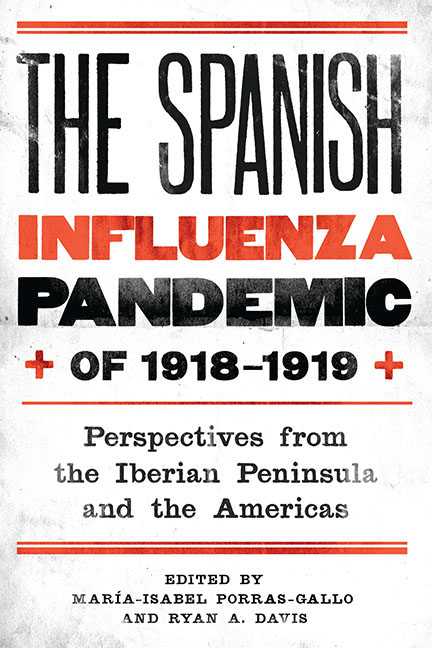 The Spanish Influenza Pandemic of 1918–1919
The Spanish Influenza Pandemic of 1918–1919 Book contents
- Frontmatter
- Dedication
- Contents
- Introduction: Emerging Perspectives of the Spanish Influenza Pandemic of 1918–19
- Part One Scientific Discourse: Now and Then
- 1 The Great Evolutionary Potential of Viruses: The 1918 Flu as a Paradigm of Disease Emergence
- 2 Spanish Flu in Brazil: Searching for Causes during the Epidemic Horror
- 3 Ricardo Jorge and the Construction of a Medico-Sanitary Public Discourse: Portugal and International Scientific Networks
- Part Two Social Responses: Human and Institutional Actors
- Part Three Interpreting the Epidemic: Sociocultural Dynamics and Perspectives
- Selected Bibliography
- List of Contributors
- Index
1 - The Great Evolutionary Potential of Viruses: The 1918 Flu as a Paradigm of Disease Emergence
from Part One - Scientific Discourse: Now and Then
Published online by Cambridge University Press: 14 March 2018
- Frontmatter
- Dedication
- Contents
- Introduction: Emerging Perspectives of the Spanish Influenza Pandemic of 1918–19
- Part One Scientific Discourse: Now and Then
- 1 The Great Evolutionary Potential of Viruses: The 1918 Flu as a Paradigm of Disease Emergence
- 2 Spanish Flu in Brazil: Searching for Causes during the Epidemic Horror
- 3 Ricardo Jorge and the Construction of a Medico-Sanitary Public Discourse: Portugal and International Scientific Networks
- Part Two Social Responses: Human and Institutional Actors
- Part Three Interpreting the Epidemic: Sociocultural Dynamics and Perspectives
- Selected Bibliography
- List of Contributors
- Index
Summary
RNA Viruses as a Paradigm of Rapid Evolution
The 1918 Spanish influenza is one of the most dramatic examples of the unpredictable threat that viral epidemics represent for the human population. In the words of Joshua Lederberg, “The survival of the human species is not a preordained evolutionary program. Abundant resources of genetic variation exist for viruses to learn new tricks, not necessarily confined to what happens routinely or even frequently.” Since 1918 we have learned about the nature of viruses, their structure, their replication in intimate relationship with their host cells and organisms, and their mechanisms of evolutionary change. Concerning the “tricks” mentioned by Lederberg, we have learned that influenza viruses can use a very large repertoire.
RNA viruses are replicated by RNA-dependent RNA (or DNA) polymerases (also termed “reverse transcriptases”), which tend to introduce incorrect nucleotides during template copying. The incorrect nucleotides are perpetuated in the genetic material of the viruses, unless the mistakes are corrected (by repair enzymes), or the genomes harboring them are eliminated by a process termed negative selection (as opposed to positive or Darwinian selection). The reason for this error-prone replication is that most viral polymerases lack an activity of error correction that is termed proofreadingrepair activity. This is in contrast to cellular DNA polymerases (and some viral DNA polymerases) involved in DNA replication, which include such a correcting function. Other repair activities in the cell that can eliminate errors in DNA are not active on replicating RNA viruses. Mistakes during viral RNA replication average one misincorporation for every ten thousand nucleotides incorporated during template copying (fig. 1.1, pt. A).
In addition to mutation, most RNA viruses can also undergo genetic recombination, a process by which a mosaic genome can be produced from two different parents. Mutation and recombination give rise to complex and dynamic mutant distributions termed “viral quasispecies” (fig. 1.1, pt. B). Quasispecies dynamics provides a mechanism for the adaptability of RNA viruses. Fitness gains can be regarded as an optimization of mutant distributions. This view is supported by many experiments that have established that competitive replication in a given environment leads to fitness gain in that same environment, while the forced accumulation of mutations (naturally through population bottlenecks or artificially with mutagenic agents) leads to fitness loss.
- Type
- Chapter
- Information
- The Spanish Influenza Pandemic of 1918–1919Perspectives from the Iberian Peninsula and the Americas, pp. 21 - 38Publisher: Boydell & BrewerPrint publication year: 2014
